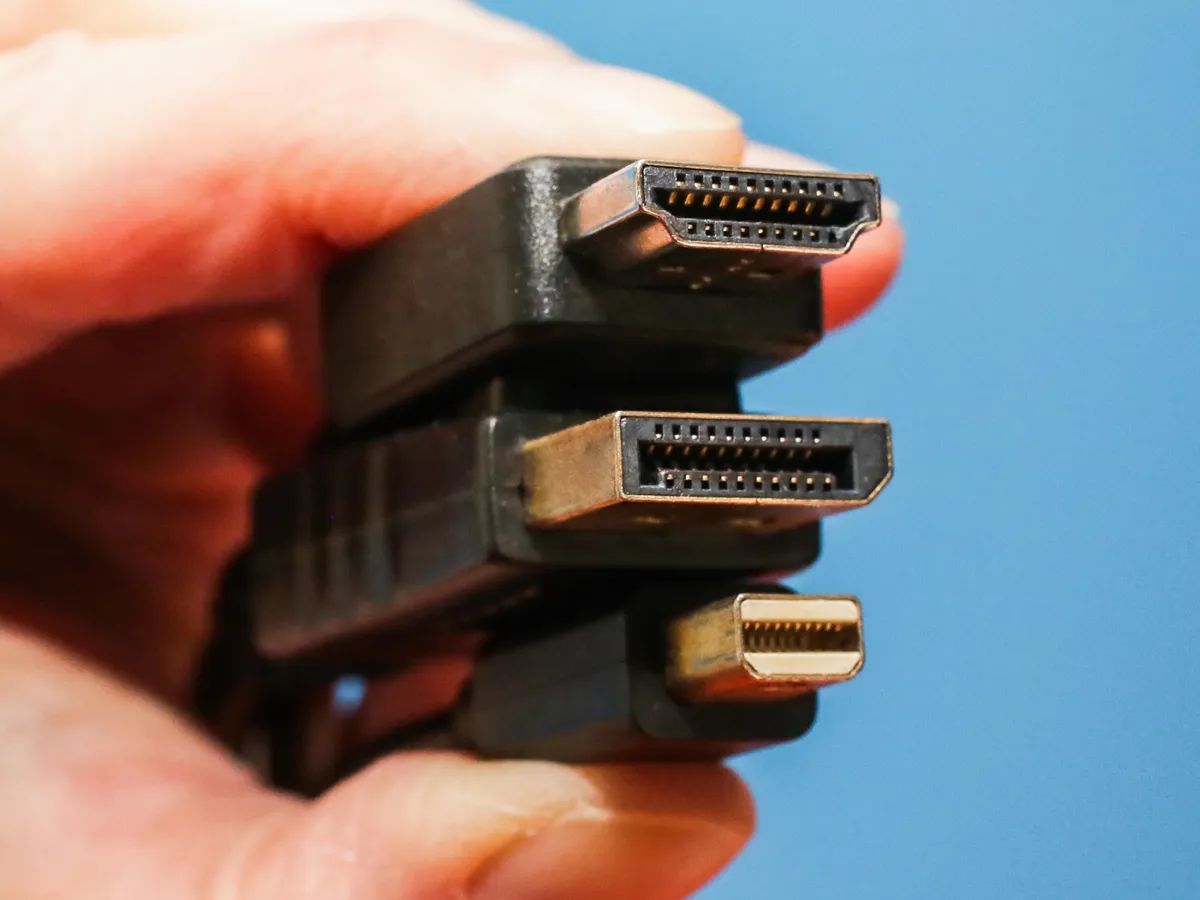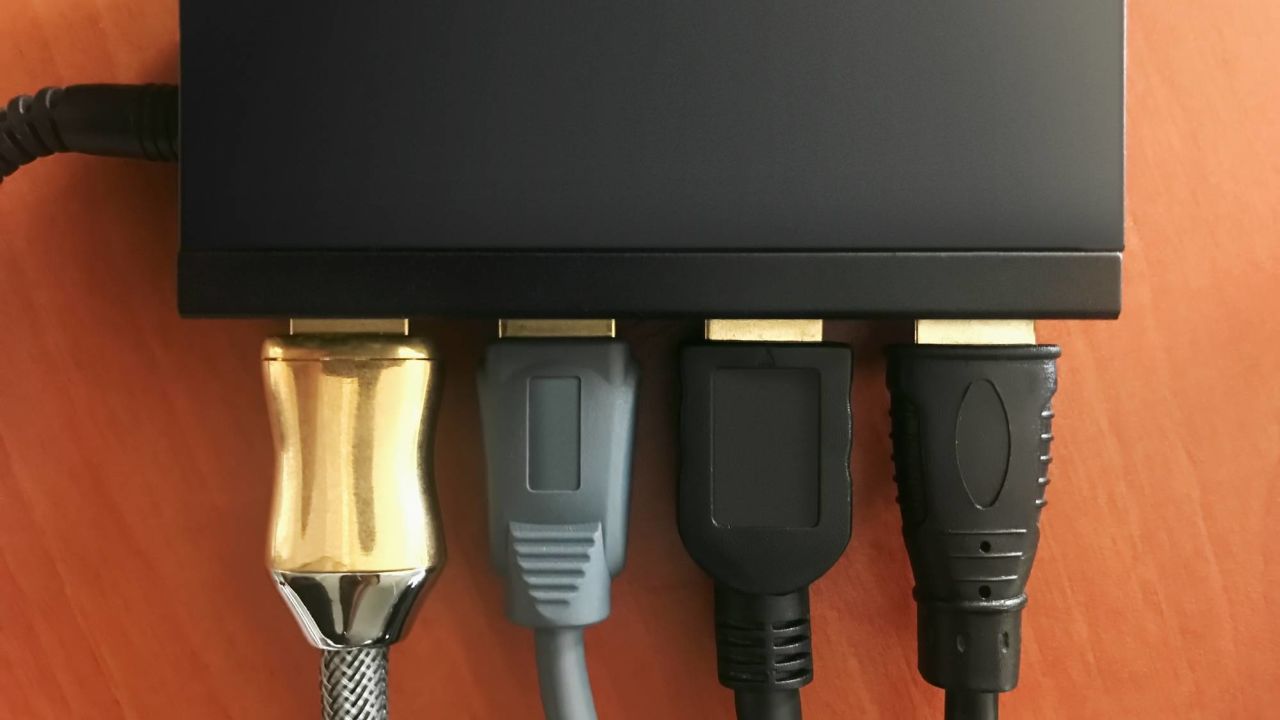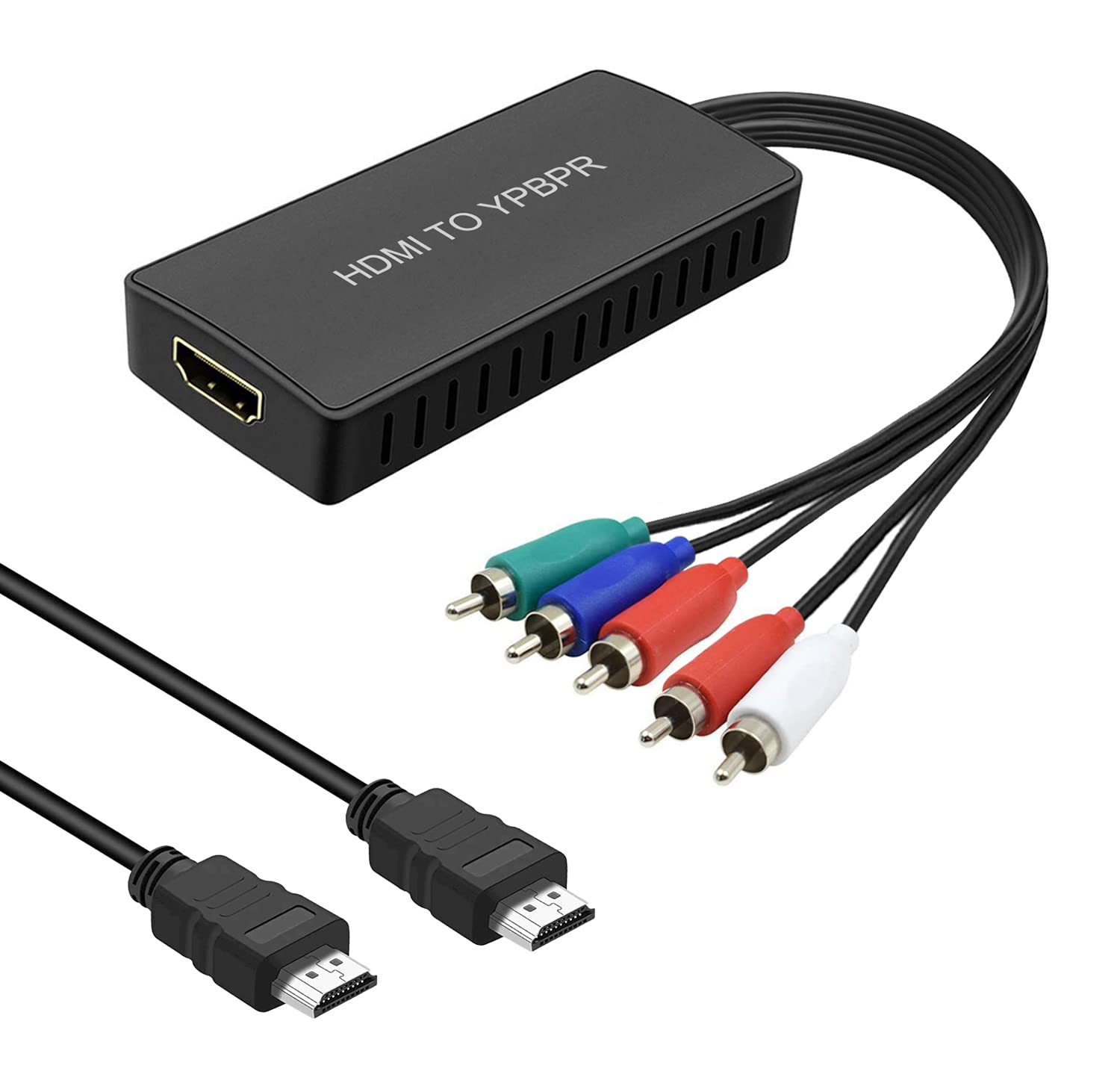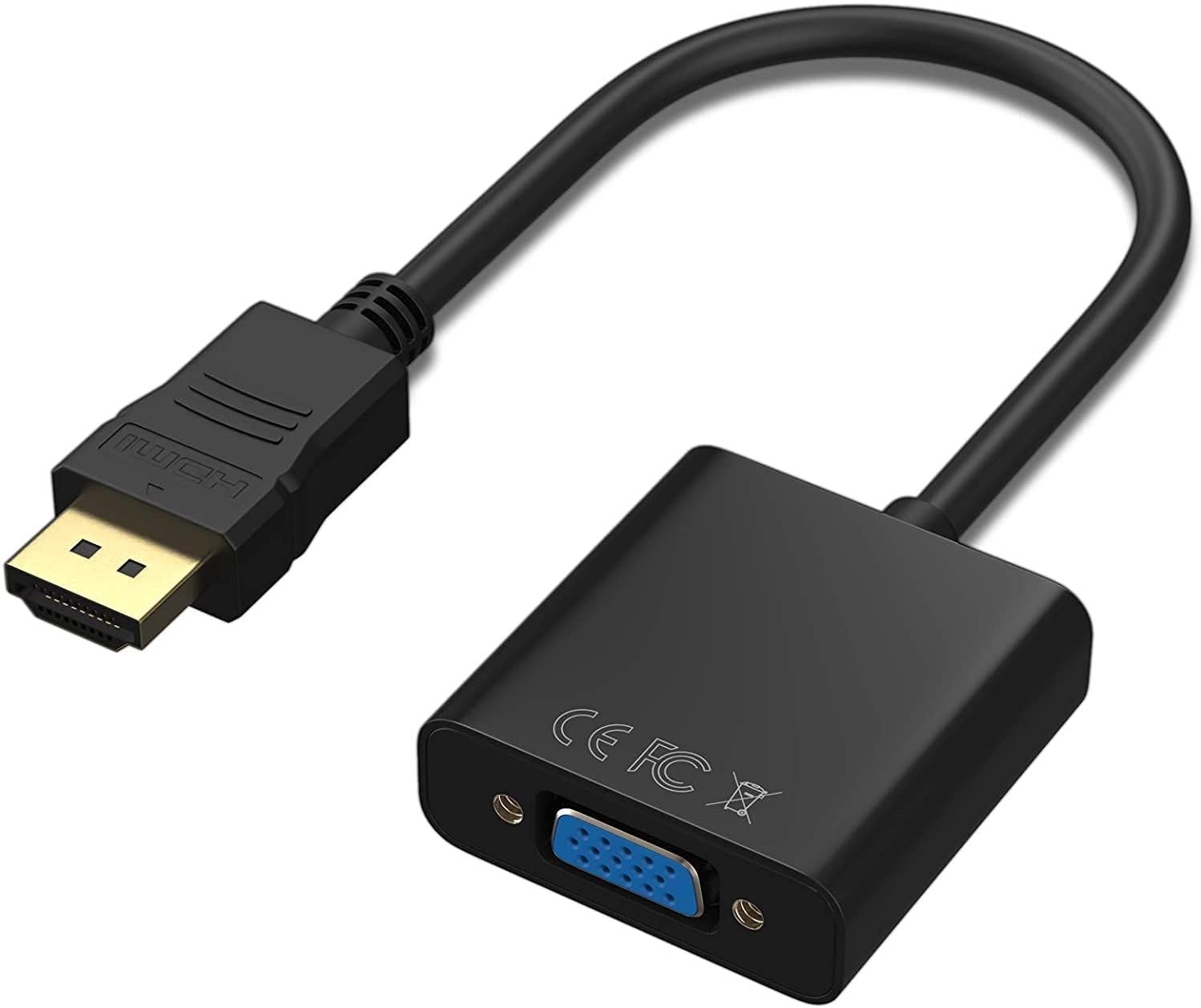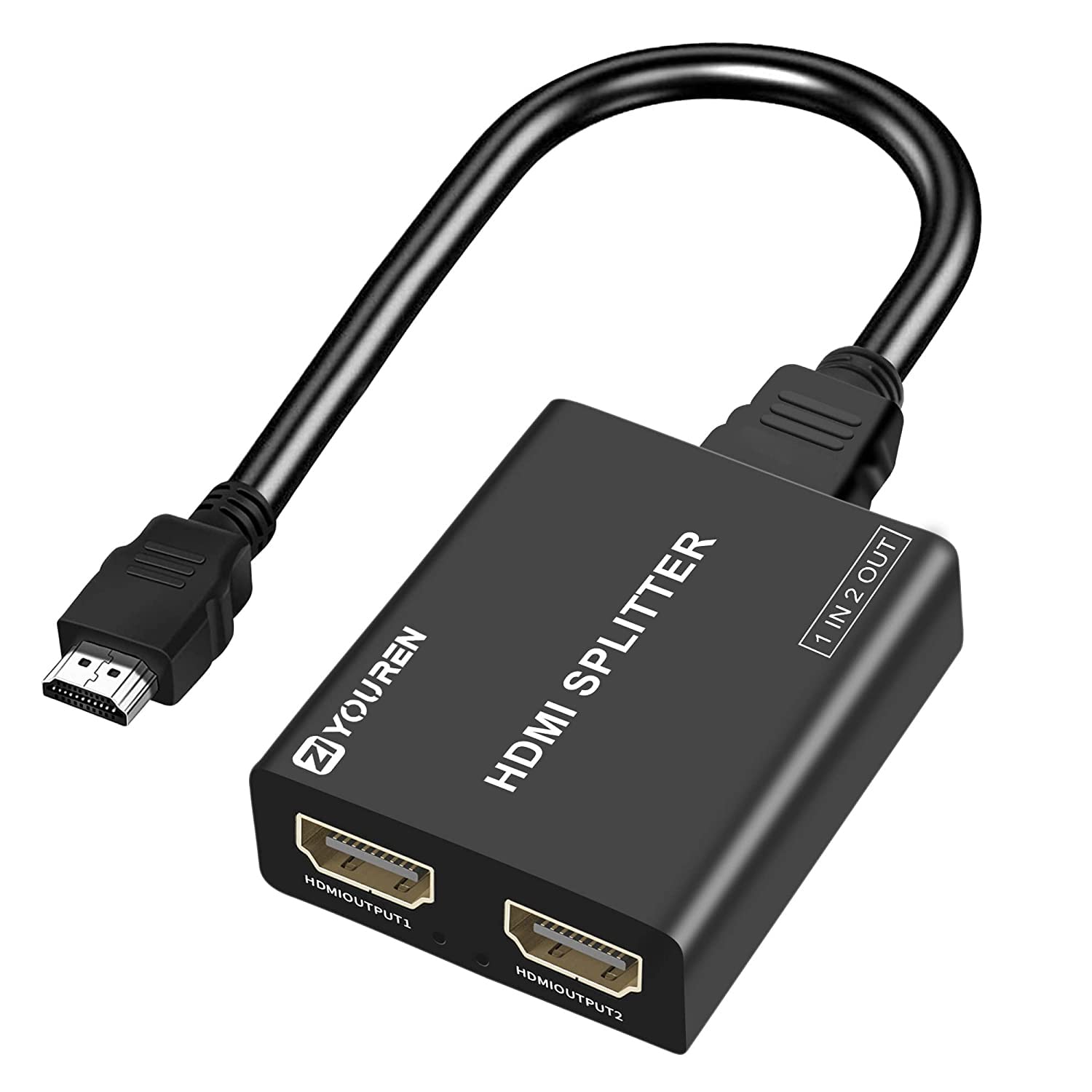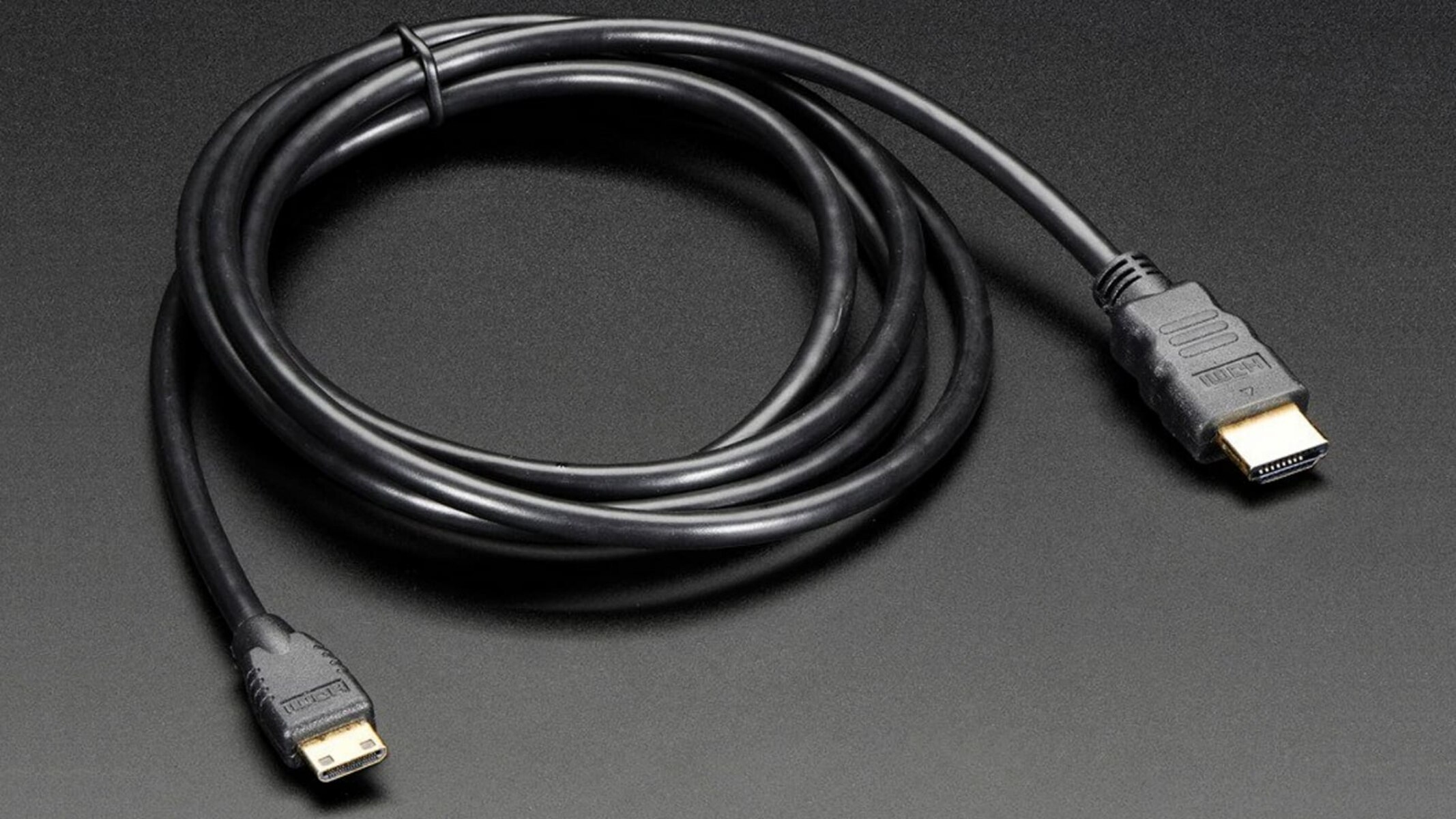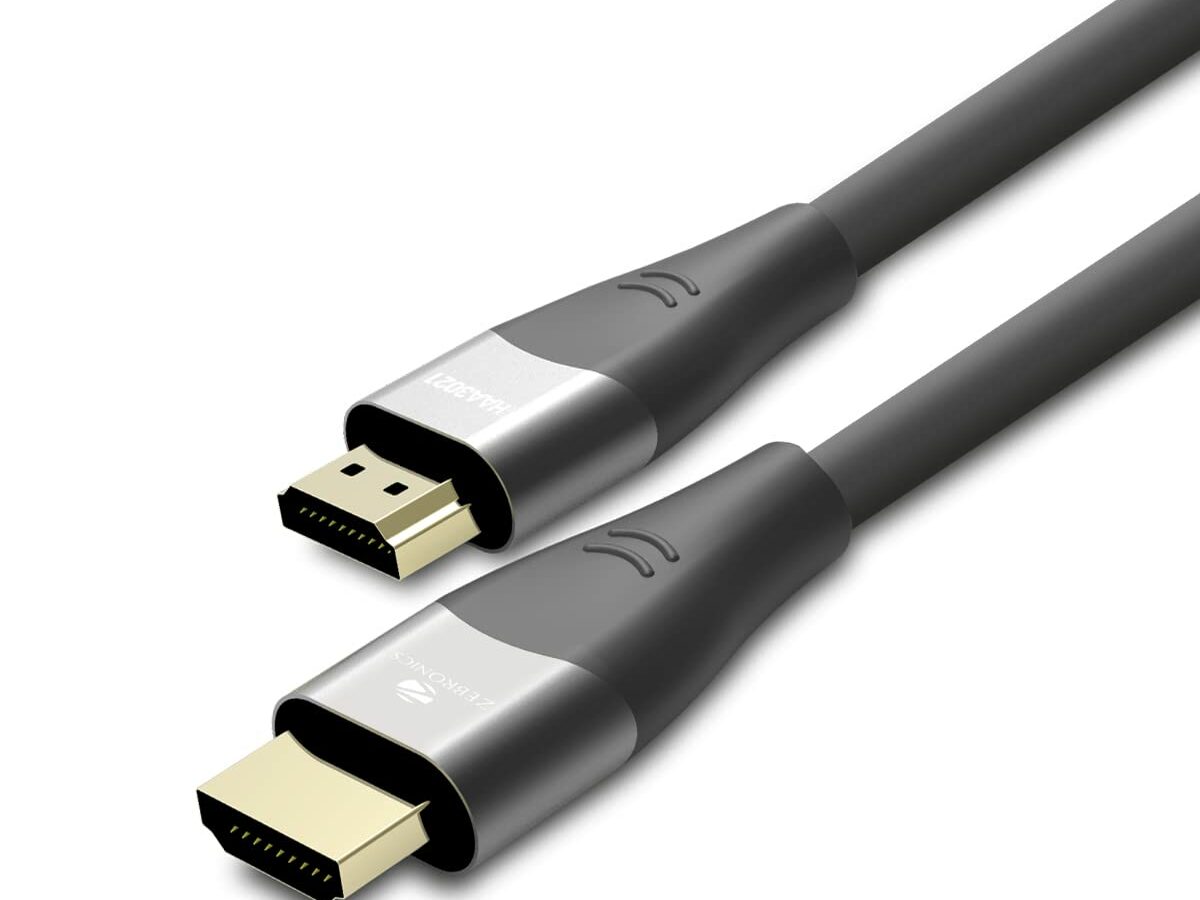Introduction
The High-Definition Multimedia Interface, more commonly known as HDMI, has revolutionized the way we connect and experience audio and video in the modern era. It has become the standard interface for transmitting high-quality digital audio and video signals between devices. Whether you’re connecting your TV to a gaming console, Blu-ray player, or sound system, chances are you’re using an HDMI cable.
HDMI has simplified and consolidated the once complex and cluttered world of audio and video connectivity. Gone are the days of multiple cables for audio and video, and the hassles of dealing with different connection standards. With HDMI, a single cable can transmit pristine high-definition video and multichannel audio, making it an essential component of any modern home theater setup.
The widespread adoption of HDMI can be attributed to its numerous advantages over its predecessors. HDMI not only provides superior picture and sound quality but also offers a seamless and convenient experience for users. It has become the go-to choice for both consumers and manufacturers when it comes to connecting and transmitting digital media.
In this article, we will explore the fascinating history of HDMI, from its introduction to the latest versions available today. We will delve into the technological advancements that led to the development of HDMI, its various iterations, and the benefits it brings to the world of audio and video connectivity.
So, grab your popcorn, sit back, and let’s take a trip back in time to uncover how HDMI came to be and why it has become an integral part of our modern digital lifestyle.
What is HDMI?
HDMI stands for High-Definition Multimedia Interface. It is a standardized audio and video interface that allows the transmission of high-quality digital signals between devices. HDMI cables are widely used to connect a variety of devices, including televisions, projectors, computers, gaming consoles, Blu-ray players, and sound systems.
One of the key features of HDMI is its ability to transmit uncompressed high-definition video and multichannel audio in a single cable. This means that you can enjoy crystal-clear visuals and immersive sound without any loss in quality. HDMI also supports a wide range of video resolutions, including 4K Ultra HD and even 8K, ensuring compatibility with the latest display technologies.
Another advantage of HDMI is its ability to transmit digital signals. Unlike analog connections, which are susceptible to interference and signal degradation, HDMI ensures a pure and pristine transmission of audio and video signals. This results in a much higher quality viewing and listening experience.
HDMI cables come in different versions, with each version introducing new features and improvements. The latest HDMI version, HDMI 2.1, offers enhanced capabilities such as support for higher refresh rates, greater bandwidth for higher resolutions and frame rates, and features like variable refresh rate and dynamic HDR.
Furthermore, HDMI supports various audio formats, including Dolby TrueHD, DTS-HD Master Audio, and object-based audio formats like Dolby Atmos and DTS:X. This allows for a rich and immersive audio experience, with sound coming from all directions.
Aside from audio and video, HDMI also supports additional data channels, allowing for features like Ethernet connectivity and device control. This means that you can use one HDMI cable to not only transmit audio and video but also connect your devices to the internet and control them using a single remote.
In essence, HDMI has transformed the way we connect and experience audio and video. It has simplified the process of connecting devices, eliminated the need for multiple cables, and ensured high-quality audio and video reproduction. With the continuous advancements in technology, HDMI is expected to evolve further, offering even more exciting features and capabilities in the future.
Evolution of Display Technology
The evolution of display technology has been a remarkable journey, with each generation pushing the boundaries of visual clarity and immersion. From the early days of cathode ray tube (CRT) monitors to the advent of liquid crystal displays (LCDs), and now the dominance of LED and OLED displays, the progress has been nothing short of extraordinary.
In the early days of television and computer monitors, CRT technology reigned supreme. These bulky displays used cathode ray tubes to create images by firing electrons onto a phosphorescent screen. While CRTs offered acceptable picture quality at the time, they were bulky, heavy, and limited in resolution.
The arrival of LCD technology marked a significant turning point in the world of display technology. LCD panels replaced the electron beam of CRTs with liquid crystals to control the passage of light, resulting in thinner, lighter, and more energy-efficient displays. LCDs offered higher resolution and better color rendition, making them the go-to choice for TVs and computer monitors.
With the rise of high-definition content, the demand for even sharper visuals led to the development of LED displays. LED (Light Emitting Diode) technology allowed for backlighting of LCD panels, resulting in improved color accuracy and contrast ratios. LEDs were more energy-efficient than their fluorescent predecessors and enabled thinner displays.
More recently, OLED (Organic Light Emitting Diode) technology has taken display technology to new heights. OLED displays offer unparalleled contrast ratios, deep blacks, and vibrant colors. Unlike LCDs, where a backlight is required, each pixel in an OLED display emits its own light, making it possible to achieve true black levels and infinite contrast ratios.
The evolution of display technology has not only focused on visual improvements but also on other aspects, such as refresh rates and response times. Higher refresh rates, such as 120Hz and 240Hz, reduce motion blur and provide smoother visuals, particularly for fast-paced content like sports and action-packed movies. Similarly, faster response times ensure that there is minimal lag between input and display, resulting in a more responsive and immersive experience.
As display technology continues to advance, we can expect even more exciting developments on the horizon. Concepts like flexible displays, transparent displays, and augmented reality are already being explored, promising to redefine how we interact with visual content.
The evolution of display technology has been integral to the development and widespread adoption of HDMI. HDMI’s ability to deliver high-quality audio and video signals perfectly complements the advancements in display technology, allowing users to fully appreciate and enjoy the stunning visuals that modern displays offer.
Birth of HDMI
The birth of HDMI can be traced back to the early 2000s when there was a growing demand for a single interface to handle both audio and video signals. Up until that point, consumers had to contend with a maze of different cables and connectors to connect their devices, resulting in a confusing and cluttered setup.
To address this issue, a group of major electronics manufacturers, including Sony, Philips, Panasonic, Toshiba, and Hitachi, came together to develop a unified audio and video interface. Their objective was to create a single digital interface that could transmit high-quality audio and video signals without any loss in quality.
In 2002, the High-Definition Multimedia Interface (HDMI) was officially launched. The HDMI interface provided a breakthrough solution by allowing uncompressed digital audio and video signals to be transmitted through a single cable. This eliminated the need for multiple cables and simplified the setup process for consumers.
The first version of HDMI supported video resolutions of up to 1080p and audio formats like stereo and multi-channel surround sound. It quickly gained popularity among manufacturers and consumers due to its convenience and superior audio and video quality.
One of the key factors that contributed to the success of HDMI was its backward compatibility. HDMI was designed to be compatible with the existing Digital Visual Interface (DVI) standard, making it possible to connect HDMI devices to DVI displays using a simple adapter. This ensured a smooth transition to the new interface for consumers who already owned DVI-equipped devices.
Over the years, HDMI has evolved and undergone several updates to meet the changing needs of the industry and keep up with advancements in technology. Each new version of HDMI introduced additional features and capabilities, such as support for higher resolutions, increased bandwidth, and advanced audio formats.
Today, HDMI has become the de-facto standard for audio and video connectivity in consumer electronics. It has found its way into TVs, projectors, gaming consoles, computers, sound systems, and many other devices. The HDMI logo has become a symbol of high-quality digital connectivity, ensuring compatibility and seamless transmission of audio and video signals.
The birth of HDMI revolutionized the way we connect and experience audio and video. It simplified the setup process, improved the overall user experience, and ensured that consumers could enjoy high-quality audio and video content without any compromise in quality.
HDMI Version History
Since its inception, HDMI has gone through several updates and revisions to keep up with the ever-evolving technology landscape. Each new version introduced enhancements and new features, allowing for improved audio and video performance. Let’s take a closer look at the different versions of HDMI:
HDMI 1.0: Released in December 2002, HDMI 1.0 was the first version to be introduced. It supported video resolutions up to 1080p and eight audio channels, providing a significant improvement over existing analog connections.
HDMI 1.1: Introduced in May 2004, HDMI 1.1 added support for DVD-Audio, a high-resolution audio format. This allowed users to enjoy studio-quality audio when connected to compatible devices.
HDMI 1.2: Released in August 2005, HDMI 1.2 brought several enhancements to the interface. It introduced support for One Bit Audio, which enabled the transmission of high-quality audio formats like Super Audio CD (SACD). Additionally, HDMI 1.2 added the ability to control Consumer Electronics Control (CEC) devices through the HDMI connection.
HDMI 1.3: In June 2006, HDMI 1.3 was introduced, marking a significant leap forward in terms of capabilities. It supported increased bandwidth, allowing for higher resolutions and refresh rates. HDMI 1.3 also introduced support for the xvYCC color space, offering a wider range of colors for more vibrant and lifelike visuals. Furthermore, it introduced features like Dolby TrueHD and DTS-HD Master Audio, which provided lossless audio reproduction.
HDMI 1.4: Released in May 2009, HDMI 1.4 brought a host of new features to the interface. It introduced support for 3D content, allowing users to enjoy immersive 3D experiences at home. HDMI 1.4 also added an Ethernet channel, enabling devices to share internet connectivity over HDMI cables. Additionally, it introduced an Audio Return Channel (ARC), simplifying the setup of audio systems by allowing audio to be sent from the TV back to the audio receiver through the same HDMI cable.
HDMI 2.0: Introduced in September 2013, HDMI 2.0 brought significant improvements in terms of bandwidth and capabilities. It increased the maximum bandwidth to 18 Gbps, enabling support for higher resolutions and frame rates. HDMI 2.0 also introduced support for 4K Ultra HD at 60Hz, allowing for smoother and more detailed visuals. Along with the increased video capabilities, HDMI 2.0 added support for up to 32 audio channels and advanced audio formats like Dolby Atmos and DTS:X.
HDMI 2.1: The latest version of HDMI, HDMI 2.1, was introduced in November 2017. It brought even more significant advancements in terms of bandwidth and features. HDMI 2.1 supports a maximum bandwidth of 48 Gbps, enabling support for resolutions up to 8K and frame rates up to 120Hz. It introduced features like Variable Refresh Rate (VRR), Quick Media Switching (QMS), and Quick Frame Transport (QFT), all aimed at reducing lag and enhancing the gaming experience. HDMI 2.1 also added support for dynamic HDR, ensuring vibrant and lifelike visuals with HDR content.
With each new version, HDMI has continued to evolve, adapting to the rapidly changing landscape of audio and video technology. HDMI 2.1 paves the way for even more immersive and high-quality audiovisual experiences, ensuring that HDMI remains at the forefront of digital connectivity.
Benefits of HDMI
HDMI offers a multitude of benefits that have contributed to its widespread adoption and popularity in the world of audio and video connectivity. Let’s explore some of the key advantages of using HDMI:
High-Quality Audio and Video: One of the primary advantages of HDMI is its ability to transmit uncompressed digital audio and video signals. This ensures that there is no loss in quality during the transmission process, resulting in pristine audio and video reproduction. HDMI supports high-definition video resolutions, including 4K Ultra HD and even 8K, allowing for stunning visuals on compatible displays.
Simplified Connectivity: HDMI eliminates the need for multiple cables and connectors by providing a single interface for audio and video transmission. This simplifies the setup process, reducing cable clutter and making it easier for users to connect their devices. With HDMI, you only need a single cable to connect your TV to your gaming console, Blu-ray player, sound system, and other devices.
Backward Compatibility: HDMI is designed to be backward compatible with older interfaces like DVI. This means that you can use an HDMI-to-DVI adapter to connect HDMI devices to DVI displays. This makes it easier to transition to HDMI without having to replace all your existing devices, ensuring compatibility with legacy equipment.
Enhanced Audio Capabilities: HDMI supports a wide range of audio formats, including Dolby TrueHD, DTS-HD Master Audio, and object-based audio formats like Dolby Atmos and DTS:X. This allows for a rich and immersive audio experience, with sound coming from all directions. With HDMI, you can enjoy high-fidelity audio that complements the stunning visuals on your screen.
Additional Features: HDMI offers additional features that go beyond audio and video transmission. It supports additional data channels, allowing for features such as Ethernet connectivity and device control through the HDMI connection. This means that you can use one HDMI cable to not only transmit audio and video but also connect your devices to the internet and control them using a single remote.
Convenience and Compatibility: HDMI is a widely adopted standard, found in a vast array of consumer electronics devices. This ensures compatibility and interoperability between devices from different manufacturers. Whether you have a TV, gaming console, Blu-ray player, or sound system, chances are they all support HDMI, making it easy to connect and enjoy your favorite content.
Future-Proofing: With each new version, HDMI continues to evolve and introduce new features and capabilities. By using the latest HDMI version, you can ensure that your devices are equipped to handle the latest audio and video technologies. This future-proofs your setup and allows you to enjoy the benefits of advancements in the audiovisual sphere.
In summary, HDMI offers numerous advantages, including high-quality audio and video, simplified connectivity, backward compatibility, enhanced audio capabilities, additional features, convenience, compatibility, and future-proofing. It has transformed the way we connect and experience audio and video, providing a seamless and immersive entertainment experience.
Conclusion
HDMI has revolutionized the world of audio and video connectivity, offering a seamless and high-quality multimedia experience. From its humble beginnings to the latest versions, HDMI has continuously evolved to keep up with the advancements in display and audio technologies. The birth of HDMI brought an end to the era of multiple cables and confusing connections, providing a single interface for transmitting digital audio and video signals.
Throughout its history, HDMI has offered various benefits to consumers and manufacturers alike. With HDMI, users can enjoy the convenience of simplified connectivity, eliminating cable clutter and making it easier to set up their home entertainment systems. The backward compatibility of HDMI ensures compatibility with legacy devices, allowing users to seamlessly transition to the new interface.
HDMI’s ability to transmit uncompressed high-definition video and high-quality audio ensures a pristine and immersive viewing experience. The support for advanced audio formats like Dolby Atmos and DTS:X adds another layer of depth to the audio experience, complementing the stunning visuals on the screen.
Additionally, HDMI’s support for features like Ethernet connectivity and device control provides added convenience for users. With a single HDMI cable, users can connect their devices to the internet and control them using a single remote, streamlining the overall user experience.
Furthermore, HDMI continues to evolve with each new version, introducing new features and capabilities. HDMI 2.1, the latest version, offers support for higher resolutions, advanced gaming features, and enhanced audio technologies, ensuring that users can stay up to date with the latest advancements in audiovisual technology.
In conclusion, HDMI has transformed the way we connect and experience audio and video in our homes. It has simplified connectivity, improved picture and sound quality, and provided a standardized interface for transmitting digital multimedia signals. Whether you’re a movie enthusiast, a gaming aficionado, or someone who simply wants to enjoy high-quality audio and video content at home, HDMI is an essential component of any modern entertainment setup.









